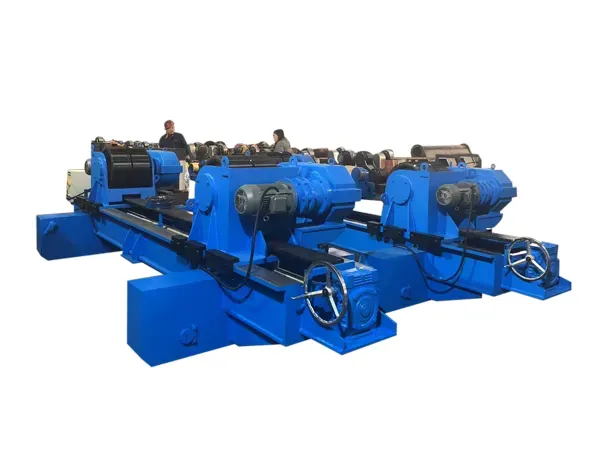Welding rollers, as the key automation equipment in the modern welding and cutting field, their importance in the welding production process is self-evident. By rotating cylindrical weldments through friction between the weldments and the drive rollers, this equipment not only significantly improves the quality of weld seams, but also drastically reduces production downtime, which improves overall productivity and reduces dependence on labor. However, it is inevitable that any mechanical equipment will encounter various challenges after a long period of use, and the welding roller frame is no exception. Various problems may occur due to mechanical wear and tear, electrical system failure or improper operation.
一. Initial diagnosis, accurate positioning
When faced with a weld roller frame failure, the first and most critical step is to conduct a thorough on-site observation and diagnosis. This includes, but is not limited to, checking whether the rotating mechanism of the welding roller frame operates smoothly, whether the clamping mechanism is able to hold the workpiece firmly, whether the rotational speed is stable, whether the workpiece is positioned accurately, and whether there are any abnormalities in the electrical system. Through meticulous observation, combined with the operating history of the equipment and the operator’s feedback, you can initially determine the probable cause of the failure, laying a solid foundation for the subsequent repair work.

二. Failure analysis, one by one investigation
1. Failure of the rotating mechanism:If the rotating mechanism of the welding roller frame is stuck or abnormal, it is likely that the gears or chains are damaged due to long-term wear and tear. At this time, these key components should be carefully checked for wear and tear, and timely replacement of damaged parts to ensure that the rotating mechanism can restore smooth operation.
2. Clamping mechanism failure: the clamping mechanism can not effectively clamp the workpiece, may be due to the failure of the spring of the clamping device or jaw wear. In this regard, all parts of the clamping device should be thoroughly inspected, the wear and tear of the serious part of the repair or replacement, to ensure that the workpiece is always stable in the welding process.
…
More detailed information about the welding roller frame troubleshooting and repair tips can be found by visiting: https://www.bota-weld.com/en/a/news/welding-roller-frame-troubleshooting-and-repair-tips.html



